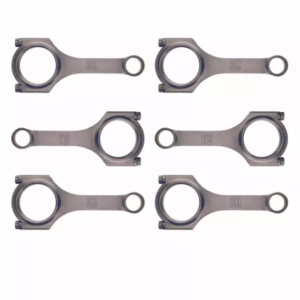The main difference between forged sintered connecting rods and cast connecting rods lies in their strength, durability, and cost. Forged sintered connecting rods have high strength and durability, while cast connecting rods have slightly lower strength and durability, and lower manufacturing costs.
Connecting rods, usually used in internal combustion engines, can be manufactured by casting or sintering forging. Choosing one of them largely depends on the application, performance requirements, and cost.

Sintering forging of connecting rods: Sintering is a forging process that involves placing powdered metal under high temperature and pressure to melt it into a solid. The advantages of sintered forged connecting rods include:
Strength: Forged connecting rods have greater strength because enormous pressure and heat are applied during the forging process.
Weight: Forged rods are lighter because their structure is denser, thereby reducing weight.
However, sintered forged connecting rods have higher production costs due to the complex manufacturing process.

Casting connecting rods: The casting process involves pouring liquid metal into a mold, cooling it, and then removing the cast parts.
The advantages of casting connecting rods are:
Lower cost: Casting requires less processing, making it relatively cheaper.
Mass production: Castings are more suitable for large-scale production.
However, due to the casting process, there may be impurities and defects in the cast connecting rod, which may lead to structural defects. And they are usually heavier than similar forged products.
Sintered forged connecting rods have high strength and durability and are typically used in applications that require high performance and reliability, such as automotive and aviation engines. Although cast connecting rods have lower strength and durability, due to their lower cost, they are usually used in applications that do not strictly require high strength and durability, such as some industrial equipment and household appliances.
In summary, forged sintered connecting rods and cast connecting rods have their own characteristics and advantages, which are suitable for different scenarios. When choosing which type of connecting rod to use, it is necessary to comprehensively consider the specific situation and needs, and make appropriate choices based on factors such as strength, durability, and cost.
Thank you for reading our article. If you need related products or have any questions or suggestions about our products, please don’t hesitate to contact us by sending an email, and we will reply to your email as soon as possible.

